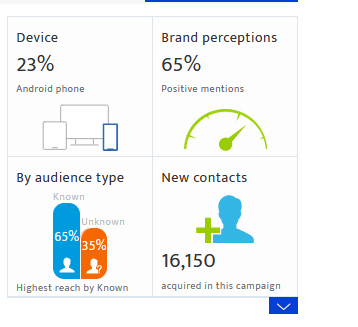Web app
Consider using the SDK to explore the web analytics services to fetch events associated with user activity of any type. It includes the standard events such as website page views, page navigation and email open, as well as custom events.
Custom event tracking#
An event is any action performed by the visitors on a web page. These could be implicit ‘default events’ such as visiting a page, exiting a page, browsing a page for ‘n’ seconds, and the SDK automatically tracks these events. There are also explicit visitor actions on the page such as form submission, link/ button clicks, product purchases by marking as ‘custom’ events that a brand can define, based on the tracking needs.
Custom events setup in this manner on a brand web page can be used as the trigger point for communications.
For example, consider the case of a bank customer using the bank’s net banking facility. A customer visits the site, reads about the personal loan, and then moves to a different page without filling in the form to see if they are eligible for a loan. In this scenario, consider setting up this user behavior as a custom event and using it as a trigger to instantly retarget the specific user with push notification (In-app message).
Client form data capture#
When the visitor journeys through a campaign execution from the communication to the brand's website, if a form is embedded in the campaign, the visitor may submit the form on the brand's website.
- Consider the form submission as a lead if the visitor's unique identifier data does not exist previously at the application-level back end.
- If the visitor's unique identifier already exists at the application level, the data is captured and stored at the back end.
When the web visitor exits the form page without entering any data, the form data may no longer be available at the back end.
After capturing the client form data, the Analytics module considers the data. The client form data captured reflects in the Campaign dashboard in the portlet termed 'New contacts acquired in the campaign.' Refer to the image below:

Examples of client form data capture in a website include contact forms to collect information on products or services and personal details, requests, or registration forms.
Conversion tracking#
A conversion is a measurable action taken by a website visitor – for example, a website visitor making an online purchase or a popup banner offering 10% of their first order while signing up for receiving campaigns through email. Signing up for receiving campaigns through email communications is a conversion of a visitor showing interest in the product or service. In addition, a popup banner offering 10% of their first order encourages the visitor to proceed further by increasing the visitor’s interest in the product or service. Conversion tracking identifies the actions taken by a visitor and analyzes the results to identify the conversion rate.
For example, consider the conversion point of a form submission on a web page. When the visitor journeys from the communication to the brand’s website and then completes a form submission, the SDK captures the visitor traffic source, the visitor identity, the event, along with the filled-up form data and passes it back. As a result, conversion attribution on the communication can be done accurately and down to the individual level.
Location update#
The geographic location of website visitors can be tracked by integrating the brand's website to the SDK in combination with Analytics tracking tools such as Google Analytics. The location update event identifies the individual visitor identity and sends appropriate communications based on the location.
The available location update information is:
Region - A location/place of a website visitor relates to the visitor's geographic location. A region is a geographic area that is smaller than a country. In U.S., a region is a state.
State/province - A state/province is a geographical area of land, part of a country similar to a state. Provinces are usually units of government.
City - A city is a large or important town in a country. Each city differs in population size and density with defined cultural aspects.
Latitude and longitude - Latitudes measure the distance north or south of the equator. Longitude measures the distance to the east and west from the prime meridian.
Notification delivery#
A push notification is a message that pops up on either a desktop or laptop using Resulticks SDK, and it can be enabled using FCM and GCM frameworks.
Enabling delivery over FCM framework
For web push notification setup on an FCM-enabled website, the brands need to share the following Firebase project information with Resulticks to enable web push notification capability through Resulticks SDK.
- apiKey: “api-key"
- authDomain: "project-id.firebaseapp.com"
- databaseURL: "https://project-id.firebaseio.com"
- projectId: "project-id"
- storageBucket: "project-id.appspot.com"
- messagingSenderId: "sender-id"
- appId: "app-id"
Alternatively, brands can provide FCM account with permissions to [email protected].
Field tracking for web#
The SDK provides a feature to track user visits and clicks on specific web pages in the domain/website. Select ‘Web analytics’ and enter the domain URL to set up tracking during Account setup. Once the web page appears in the application, the SDK tracks the user visits, the clicks and page navigations.